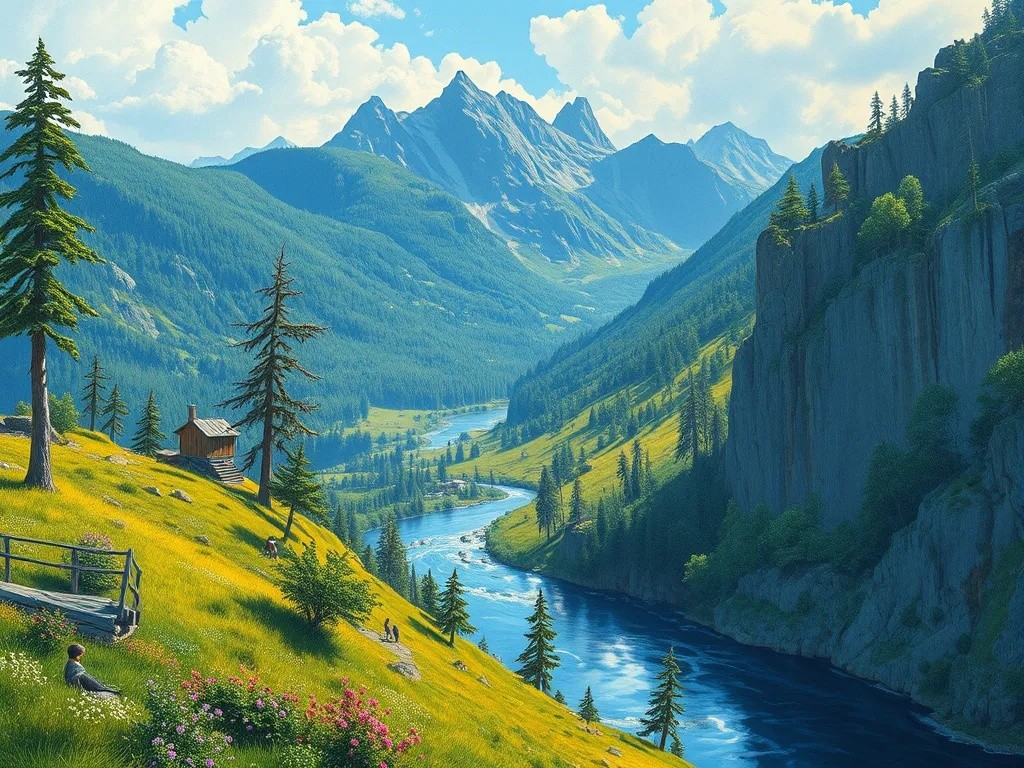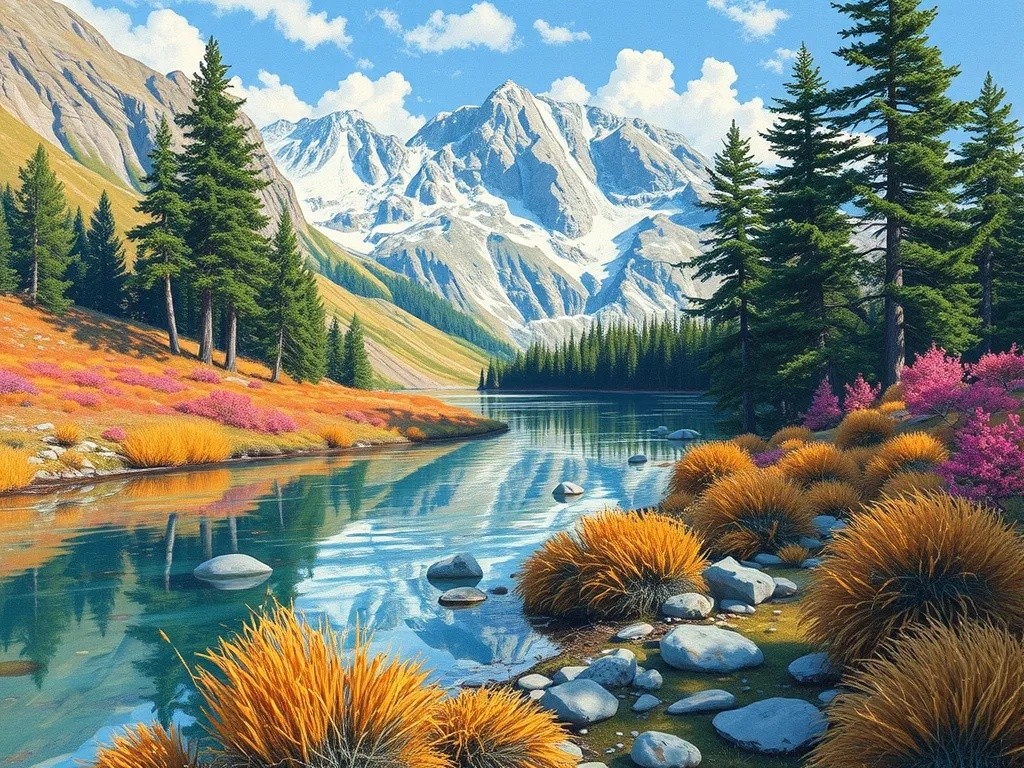In recent years, there has been a significant advancement in the field of Artificial Intelligence (AI) and Augmented Reality (AR). These technologies have become increasingly popular and have the potential to enhance virtual experiences in various fields such as gaming, education, healthcare, and...
AI Learned to Paint Landscapes Indistinguishable from Photographs

The boundary between artificial intelligence and artistic mastery has reached an unprecedented milestone. Recent developments in AI technology have produced landscape paintings so photorealistic that even trained art critics struggle to distinguish them from actual photographs. This breakthrough represents a fundamental shift in how we understand both artificial creativity and the nature of artistic expression itself.
The Technical Revolution Behind AI Art
Modern AI painting systems utilize sophisticated neural networks trained on millions of landscape photographs and classical paintings. These systems, particularly those based on Generative Adversarial Networks (GANs) and diffusion models, have learned to understand the intricate relationships between light, shadow, texture, and atmospheric perspective that make landscapes appear authentic.
Key Technological Components
The most advanced AI painting systems incorporate several critical technologies:
- Deep Learning Networks: Multi-layered neural networks that process visual information with extraordinary complexity
- Style Transfer Algorithms: Systems that can apply specific artistic techniques while maintaining photographic accuracy
- Atmospheric Modeling: AI understanding of how light behaves in different weather conditions and times of day
- Texture Synthesis: Advanced algorithms that recreate the subtle details of natural surfaces like water, foliage, and rock formations
The Art World's Response
The emergence of photorealistic AI landscapes has sparked intense debate within artistic communities. Traditional landscape painters find themselves confronting questions about the value of human skill versus machine precision. Some embrace AI as a powerful tool for artistic exploration, while others view it as a threat to the authenticity of human creativity.
Professional Applications
Beyond the art world, these AI capabilities have found practical applications in various industries:
- Film and television production for creating believable backgrounds
- Video game development for generating vast, realistic environments
- Architecture and urban planning for visualization purposes
- Real estate marketing for property presentation

The Science of Visual Deception
What makes these AI landscapes so convincing lies in their ability to replicate the subtle imperfections that characterize real photographs. Traditional computer graphics often appear too perfect, lacking the organic irregularities that human eyes associate with authentic imagery. AI systems have learned to incorporate these natural variations, creating images that feel genuinely photographed rather than artificially generated.
Challenges in Detection
Identifying AI-generated landscapes has become increasingly difficult. Experts now rely on sophisticated analysis techniques, examining factors such as pixel-level inconsistencies, unnatural lighting patterns, and subtle geometric anomalies that may reveal artificial origins. However, as AI technology continues advancing, even these detection methods face limitations.
Ethical Considerations and Future Implications
The ability to create indistinguishable landscape images raises important questions about authenticity and representation. In an era where visual media heavily influences public perception, the proliferation of AI-generated content demands careful consideration of disclosure practices and ethical guidelines.
Impact on Photography and Art Markets
The landscape photography market faces potential disruption as AI-generated alternatives become more accessible and affordable. Professional photographers are adapting by emphasizing the unique human perspective and storytelling elements that AI cannot replicate. Similarly, traditional painters are exploring ways to incorporate AI tools while maintaining their distinctive artistic voice.
Looking Forward
As AI painting technology continues evolving, we can expect even more sophisticated landscape generation capabilities. Future developments may include real-time environmental adaptation, personalized artistic styles, and integration with virtual and augmented reality platforms. The challenge will be balancing technological advancement with preservation of human artistic values and authentic creative expression.
The achievement of photorealistic AI landscape painting represents more than a technical milestone—it marks a new chapter in the relationship between human creativity and artificial intelligence. As these tools become more accessible, they will undoubtedly reshape how we create, consume, and understand visual art in the digital age.



